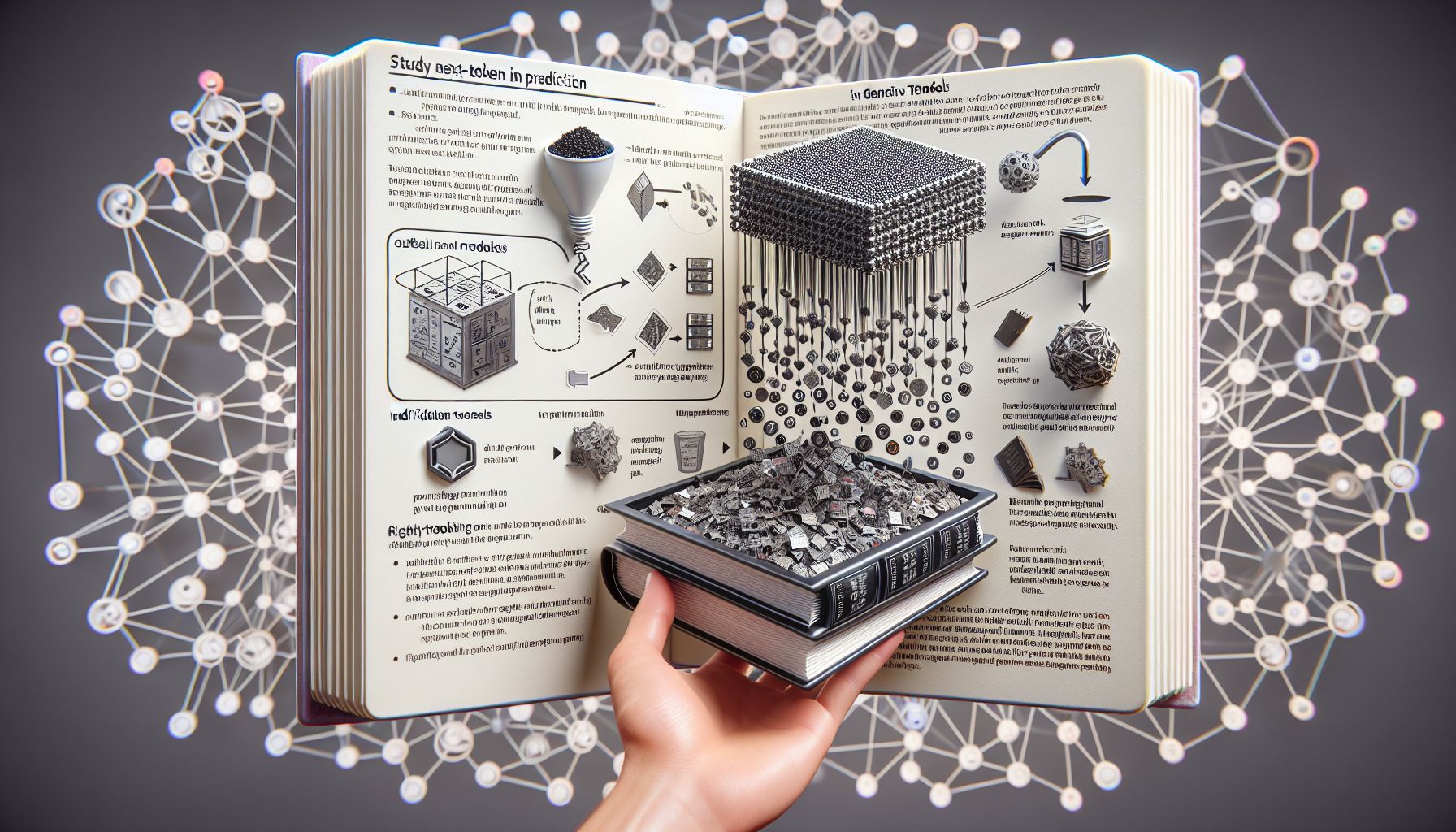📌 Let’s explore the topic in depth and see what insights we can uncover.
⚡ “Uncover the secrets of artificial intelligence by delving into next-token prediction and its game-changing role in generative models. This is where the magic of AI creativity truly comes to life!”
Are you knee-deep in the world of data science, deep learning, and artificial intelligence? Or perhaps simply fascinated by how your smartphone’s predictive text seems to read your mind? Either way, you’re about to embark on an exciting journey into the core of generative models: next-token prediction. From humble auto-complete features to grand AI text generation, it’s the unseen hero behind the curtain, making our tech smarter with every keystroke. In this comprehensive guide, we’re going to delve deep into the world of next-token prediction, its role in the realm of generative models, and the groundbreaking implications this technology has for the future. Buckle up, as we’re about to take a fascinating ride into the world of AI-generated text!
🧩 What is Next-Token Prediction?

"Unlocking the Future with Next-Token Prediction"
Next-token prediction is akin to a soothsayer of the digital world, predicting the future by guessing the next word or token in a sequence. Think of it as the literary version of a crystal ball. It’s the technology that powers autocomplete in your email, predictive text on your smartphone, and more complex applications like chatbots and language translation systems. In next-token prediction, each word, character, or other unit of data is called a ‘token’. The objective is to predict the ‘next’ token based on the context of previous tokens. It’s like a high-tech game of fill-in-the-blank, where the machine is the player guessing what comes next. Here’s a simple example: given the input “I am feeling…”, the next-token prediction might suggest “happy”, “sad”, or “tired”. The prediction depends on the model’s understanding of language, which it learns from a vast amount of text data.
🔍 The Role of Next-Token Prediction in Generative Models
Generative models, as their name suggests, are designed to generate new data that closely resemble some input data. They’re like digital artists, creating new masterpieces inspired by their training. Next-token prediction is the heartbeat of these generative models. It’s the engine that drives the creation of new, coherent sequences. Without it, our digital artist would be painting blind, with no sense of what stroke should come after the previous one. Let’s take the example of a generative model designed to create human-like text. It starts with an initial input (or ‘seed’) and then uses next-token prediction to build out a coherent text sequence. This process is repeated, with the model using the expanded sequence as the new input for further prediction. It’s like a digital game of telephone, with the model whispering words to itself, each time adding a new one based on what it has ‘heard’ before.
🎓 How Does Next-Token Prediction Work?
Next-token prediction is a complex dance between probabilities and neural networks. It all begins with a language model, a type of AI model that understands language based on patterns in the data it’s been trained on.
Here’s a simplified breakdown of how next-token prediction works:
**Tokenization
** The model breaks down the input sequence into individual tokens.
**Embedding
** These tokens are then converted into numerical representations, or ‘embeddings’.
**Contextual Understanding
** The model processes these embeddings using layers of artificial neurons, learning the context of each token in relation to the others.
**Probability Distribution
** The model generates a probability distribution for the next token, based on what it has learned.
**Selection
** Finally, the model selects the most likely next token, according to its probability distribution. The model then adds this predicted token to the sequence, and the process repeats. It’s a digital echo, with the model constantly ‘listening’ to its own output and using it as the basis for its next prediction.
🚀 The Significance of Next-Token Prediction in AI Development
Next-token prediction might seem like a neat party trick, but its implications go far beyond autocompleting emails or generating amusing paragraphs of text. It’s a critical component in many areas of AI, including natural language processing (NLP), machine translation, and even creative writing. Natural Language Processing (NLP): Next-token prediction enables machines to analyze, understand, and generate human language. It’s the bedrock of NLP tasks such as sentiment analysis, text summarization, and named entity recognition. Machine Translation: In machine translation, next-token prediction plays a vital role, translating text from one language to another. It’s the invisible hand guiding Google Translate and similar services. Creative Writing: Yes, AI can write, and it’s getting better every day! Generative models powered by next-token prediction are creating everything from poetry to movie scripts, opening up exciting new frontiers in AI creativity.
🧭 Conclusion
Next-token prediction is much more than a clever computational parlor game. It’s the lifeblood of generative models, driving their ability to create new, coherent sequences of data. From seemingly mundane tasks like autocomplete features to the grand visions of AI-written novels, it’s the engine that powers the generative capabilities of our digital world. As we move forward in our AI journey, next-token prediction will continue to play a crucial role. It’s the oracle of the digital age, predicting the future one token at a time. So the next time your smartphone suggests the end of your sentence, take a moment to appreciate the complex dance of probabilities and neural networks happening behind the scenes. Your phone isn’t just predicting text; it’s offering a glimpse into the future of AI.
⚙️ Join us again as we explore the ever-evolving tech landscape.
